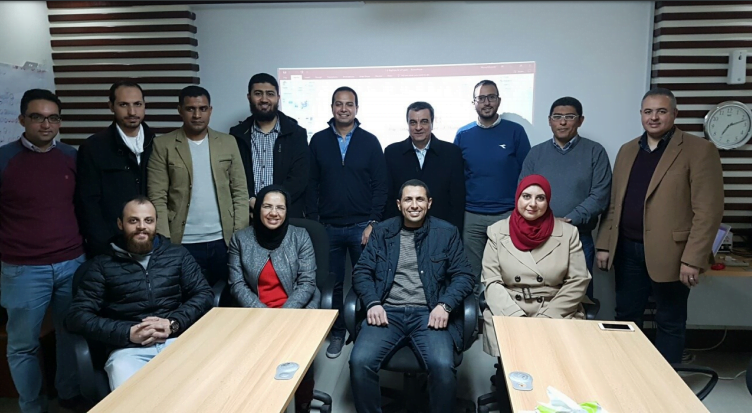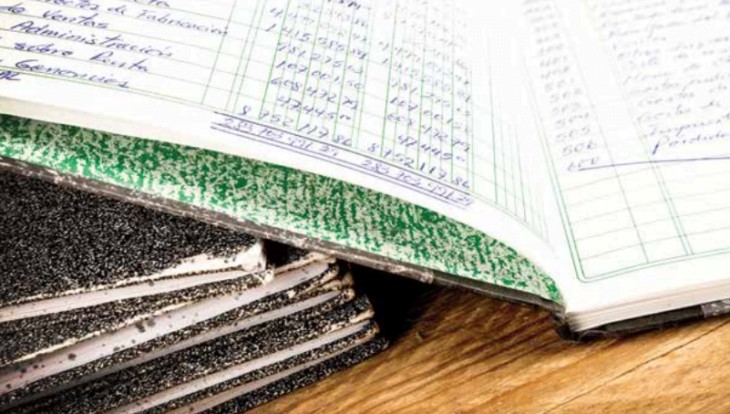5S Done Right
5S. Five short Japanese words, each beginning with an “S”. The majority of employees in the industrial sector, and increasingly in the public sector, have heard about the “5Ss”. The problem? The vast majority of companies trying to “implement” 5S fails, and does so repeatedly. Many mistake it as a concept for cleaning and tidying up—boring but necessary activities for any professional business. We will take a closer look at each of the five S-words, and may find that many of us might have missed the point.

The original 5Ss are “Seiri”, “Seiton”, “Seiso”, “Seiketsu”, and “Shitsuke”. Done right, 5S creates an effective and attractive workplace. It supports visual control, eases communication, and helps continuous improvement. The indirect effects are higher safety, better product quality, reduced delivery times, reduced process costs, improved worker satisfaction, better environmental performance, and generally improved productivity. Then why do most firms struggle with 5S? Perhaps our understanding of 5S has been lost in translation.
The first and second Ss: Seiri & Seiton
The two first Ss — Seiri (整理) and Seiton (整頓) — belong together. The first kanji character (整), which is shared by both words, is a symbol for “order”. The two second kanji letters (理 and 頓) mean “law / logic / reason” and “settle down / root / arrange” respectively, and modify the meaning of the first symbol. Apparently, Japanese do not differentiate between Seiri and Seiton in every-day life. A Japanese colleague of mine explains:
Regarding Seiri and Seiton, we have been taught these two words since we were in the elementary school. They were almost always used together. These two words were posted in the class room. We used to keep our text books and other writing tools in our desk. We were always asked by the teachers to keep them in order; then the teachers asked to us to “Seiri-Seiton”.
Seiri is usually translated to “sort”. It is about sorting things in an area, deciding what is needed for getting the job done and what is not. Seiton is usually translated to “set-in-order” or to “straighten”. It also includes the sequencing and visual labelling of locations. An intuitive and usual slogan is “a place for everything and everything in its place”. An important objective of Seiton is to reduce the non-value adding activity of searching for items, tools, and documents. The core meaning of Seiri-Seiton is to keep only what you soon need close to you, in orderly designates places. Such workplace organization is the foundation of 5S.
The concepts of sorting and setting-in-order do not have their origin in Japan. Mankind has been sorting items since forever. Cavemen were sorting food and firewood thousands of years ago. When we think of it, the first two Ss are really common sense. Three good examples of how excellent Seiri-Seiton can look like in our daily lives are the carpenter’s tool belt, the organization of a dental chair, and the chefs’ “mise en place” (a French term for organizing ingredients and utensil for quick access before cooking). In everyday work, the process of putting things back to the right place after you have used them is “Katazuke”, which translates to what all children know as “tidying up”.
The third and fourth Ss: Seiso & Seiketsu
The two next Ss — Seiso (清掃) and Seiketsu (清潔) — also share their first kanji character, 清, which connotes pure, clear, and/or fresh, and is associated with water. The latter kanji in Seiso, 掃, means “sweep”. The second kanji in Seiketsu, 潔, is a very positive character describing something pure, clean, holy, and/or free of dust and germs. Clearly both of them are related to cleaning. Seiso literally means “cleaning” and Seiketsu is a general term referring to “maintaining cleanliness” (as in good hygiene) and is a very usual expression in Japan
In Japanese primary-, secondary- and high schools, it is a very common practice that students have daily cleaning time, for example 30 minutes. They clean not only their classrooms, but also common areas such as the corridors, toilets, entrance, etc. A more common Japanese word for Seiso is “Souji” (掃除). It is one of the fundamental Japanese customs. An illustrative example: In the 2014 Soccer World Cup in Brazil, the media broadcasts pictures of Japanese soccer fans tidying up their seats and sitting areas after the games.
Sticking to the letter S, the English translation of Seiso is often “sweep”, “scrub” or “shine”, even though “cleaning” would arguably be closer. Note that Seiso is not just about brushing and washing, it aims to keep machines, equipment and facilities in a functional, visual and well-maintained state. Because “dust attracts dusts” and “litter stimulates littering”, the absence of Seiso quickly results in an impairing factory.
Seiketsu is often translated to “standardize” in the meaning of maintaining a standard. This might result in wrong interpretations: Seiketsu is not the activity of making work standards (another important element of lean production), but rather the activity of sustaining all the three first Ss. Seiketsu is the ideal status after you have sorted, set-in-order, and cleaned up. In some sense it means creating and maintaining standards for Seiri, Seiton, and Seiso. Seiketsu is the foundation for improvement, well-being of the employees, and effective production. A Japanese colleague of mine, who moved to Europe a few years ago, provides an illustrative example:
At my kid’s school [in Norway], the kids rarely have opportunities to clean the shared area. Instead, the school hires a janitor for cleaning, and the parents do big cleaning event twice a year. In Japan, we always think that it is much better to let pupils clean by themselves so that they use the areas with more care and find improvements for a better school environment. To have and keep “Seiketsu” should be a goal in the school.
The fifth S: Shitsuke
The fifth S, “Shitsuke” (躾), is different from the first four Ss. According to my Japanese colleagues, Shistuke is a rather strange word to use in a professional business setting, because it is usually reserved for raising children or pets. Toyota originally only used the first four Ss (4S). Shitsuke can be translated to “discipline”, “educated” or “following the rules”. Shitsuke implies a set of rules that somebody is taught. For 5S, the set of rule is 4S. The kanji character (躾) can be split into two parts: 身 and 美. 身 means body and 美 means beauty. In this sense, Shitsuke is the process of training the (mental) body to become beautiful – which refers to developing a healthy and disciplined organizational culture.
The most usual English translation of Shitsuke, “sustain”, can be misleading: Shitsuke is not about sustaining the first four Ss per se (remember that Seiketsu is the process of sustaining Seiri, Seiton and Seiso), but rather a fundamental culture-building process that makes sure people see the purpose of and are motivated to act on the rules of 4S. It fosters self-motivated discipline in the members of the organization. Shitsuke should manifest itself in deeds and habits, such as, for example, washing hands, using safety equipment and proper working clothes, respecting the work time, prioritizing team over self, following standard operating procedures, and contributing with creativity to improve the standard.
Conclusion: 5S done right
5S is extremely popular in industry. It is often celebrated as the first “tool” to implement in a lean journey. Unfortunately, countless firms never make it beyond the first Ss, and then they regress to “no S”. As this discussion of 5S shows, 5S is not a tool, but rather a fullconcept that builds a foundation for any professional business. Introducing the two first Ss, Seiri-Seiton, result in an orderly, effective and logical workplace. Adding the third S, Seiso, makes the workplace clean, functional and attractive. These three Ss are good housekeeping practices and create “visual control”, which is a wanted result of any 5S project. The fourth S, Seiketsu, is about sustaining the result. And the fifth S, Shitsuke, is about building discipline in the organization towards the idea and standards of 5S.
Let’s face it, remembering five Japanese words (even remembering five sequenced words of your native language) is a challenging task. It is much better to understand the underlying idea of the concept. Not forcing a translation of 5S into words staring with S, I find the following suggestion to be more correct:
- Seiri – Sort items to retain, return and rid
- Seiton – Organize items in the workplace
- Seiso – Clean the workplace
- Seiketsu – Maintain Seiri, Seiton and Seiso
- Shitsuke – Discipline the organization
Individual perceptions of 5S differ widely. Very often it is wrongly perceived as a mere tool for tidying up and cleaning. These are indeed essential elements of Seiton and Seiso, but do not capture Taiichi Ohno’s and Shiego Shingo’s original idea of the famous Ss. We can hardly blame anyone for this limited understanding of 5S. First, there are different translations of the concept—some more correct than others. Even best-selling books on lean production get 5S wrong, most often misinterpreting Seiketsu and Shitsuke. Second, 5S is not a very intuitive concept; Seiketsu is the integral of Seiri, Seiton and Seiso, and Shitsuke is the integral of Seiketsu and a higher-level characteristic of the organizational culture. Third, because companies usually do not understand Shitsuke, the other Ss can never be sustained. This leads to cyclical restarts of incomplete 5S projects. Fourth, 5S itself has a direct cost, but doesn’t save a penny; the benefits are plentiful, but indirect and hard to measure. Fifth, 5S is not sexy; it makes people start daydreaming of the weekend. We all know that a certain level of industrial housekeeping is needed, but can we ever succeed with 5S?
Here is my conclusion: Try not to make 5S a goal in itself. It could probably be a good idea to never introduce (or re-introduce) 5S as a “tool” for your company. Focus instead on the leadership part, building the right discipline and culture in your organization towards the objective of 5S:
“To create, maintain, and improve an efficient and attractive work-place organization with high levels of visual control.”
By Torbjørn H. Netland, PhD
* This article is an excerpt of the two-part article “5S: we are doing it wrong – Part I and Part II”, first published in the Lean Management Journal (Vol 5, Iss. 9/10). The original article includes advice on how 5S can be addressed in your organization. Download the PDF of the full article.
Citation: Netland, T. H. (2015) 5S – we are doing it wrong, Lean Management Journal, Vol 5, Iss. 9/10, pp. 9-11/18-20.
Acknowledgements
To write this post, I got great help and input from colleagues and friends. Many thanks to:
- Mr. Kouichi Kimura, International consultant in Japanese production methods, Mie, Japan.
- Dr. Kodo Yokozawa Project Research Associate, Manufacturing Management Research Center of the University of Tokyo, Japan.
- Dr. Ryusuke Kosuge, Associate professor of operations management, Ritsumeikan University, Oita, Japan.
- Dr. Hajime Mizuyama, Associate professor of Production and Operations Management, Aoyama Gakuin University, Tokyo, Japan.
- Mrs. Mieko Igarashi, PhD candidate of purchasing management, NTNU Trondheim, Norway.
 PhD in Operations Management. International speaker. Netland is an expert in Company-specific production systems (XPS) / Lean production. Other competence: Operations management, Business improvement, Logistics, International business, Change management, Research.
PhD in Operations Management. International speaker. Netland is an expert in Company-specific production systems (XPS) / Lean production. Other competence: Operations management, Business improvement, Logistics, International business, Change management, Research.






